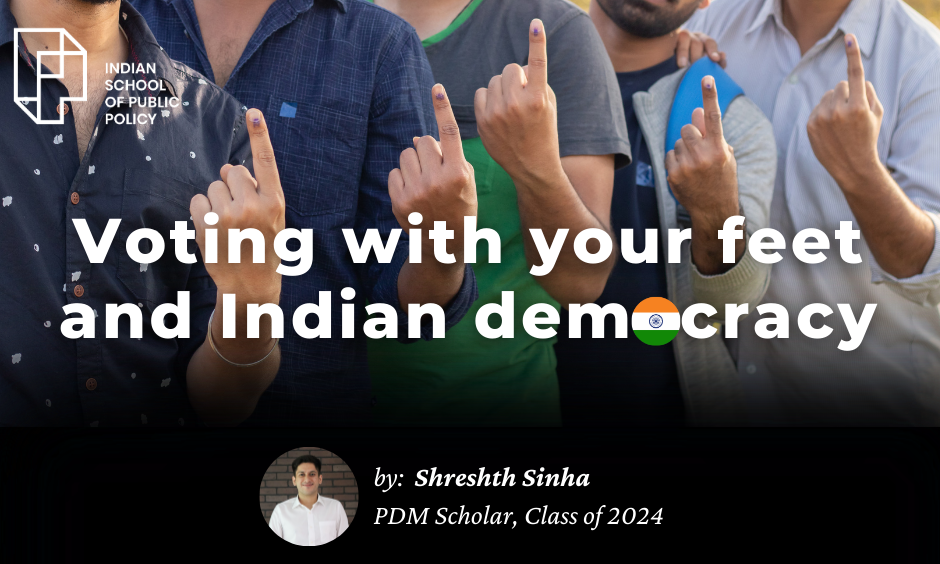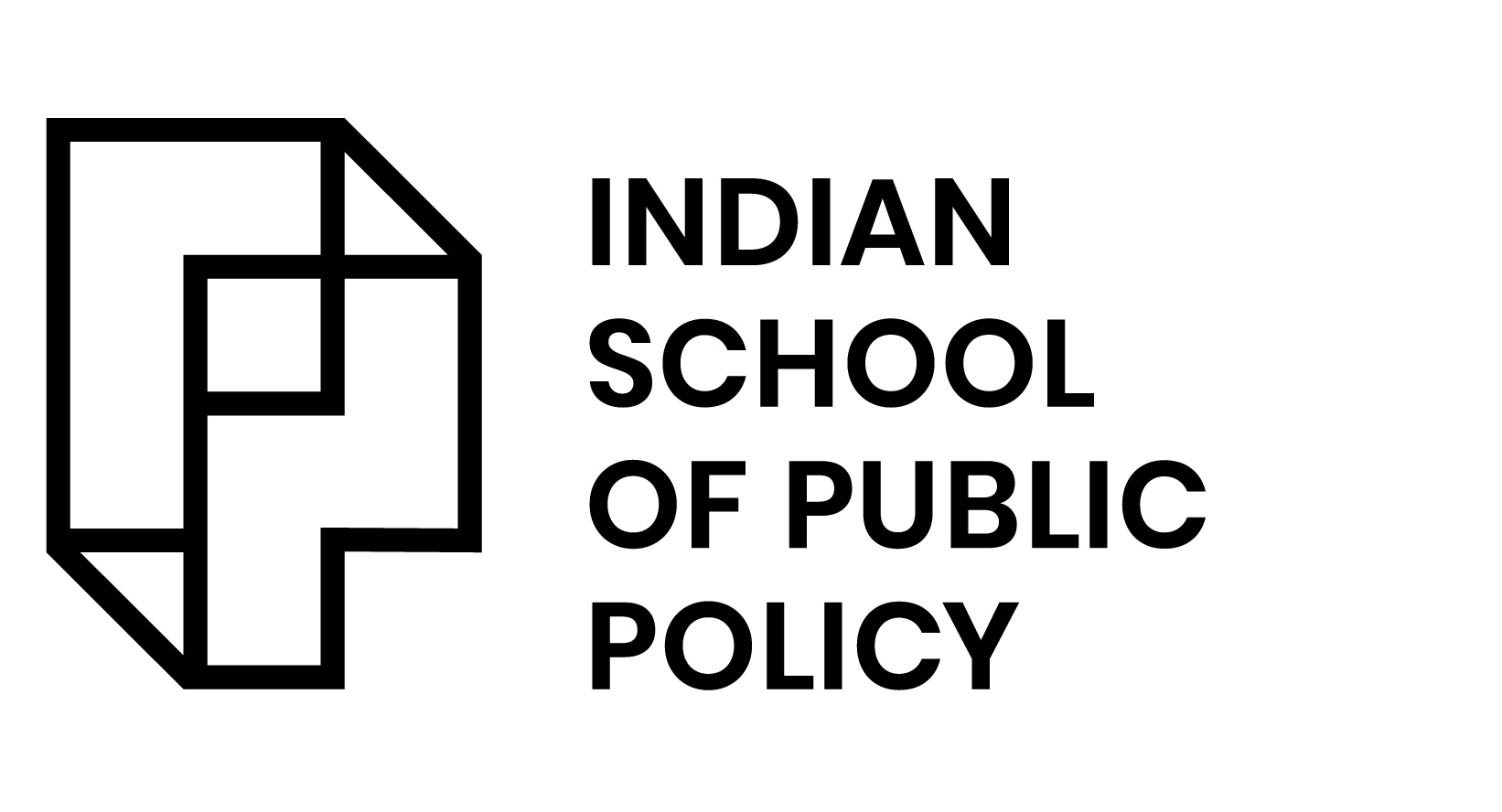
Voting with your feet and Indian democracy

In Indian democracy, the phenomenon of “voting with your feet” offers a unique lens through which to examine the intricate interplay between individual preferences, institutional competition, and the complexities of social choice. As the nation braces for the pivotal 2024 general elections, this concept takes on heightened significance, challenging conventional notions of democratic expression and prompting a re-evaluation of the mechanisms through which citizens’ aspirations are articulated and addressed. While traditional voting mechanisms remain the bedrock of electoral processes, the phenomenon of migration and mobility can be viewed as a form of revealed preference, where individuals effectively “vote” for different policies, institutions, and social systems by choosing where to live and work.
The idea of voting with your feet is rooted in the economic theory of free movement and competition between jurisdictions, as propounded by Charles M. Tiebout’s seminal work on local expenditures. This theory suggests that people will migrate to the jurisdiction that offers the optimal bundle of public goods, taxes, and living conditions, effectively “voting” for their preferred mix through their location choice.
This theory laid the groundwork for understanding migration as a form of revealed preference, where citizens express their preferences not through traditional voting mechanisms but through the tangible act of relocating. Albert O. Hirschman’s influential work, “Exit, Voice, and Loyalty”, further solidified the concept of voting with one’s feet as a powerful tool for individuals to express dissatisfaction with an organisation or system. Hirschman argued that individuals have two primary mechanisms for responding to dissatisfaction: “voice” (voicing criticism and demanding change from within) and “exit” (leaving for an alternative). In the context of migration, the option of “exit” – voting with one foot – acts as a potent disciplining force on governments and institutions, compelling them to provide an attractive environment for residents and businesses.
Within India’s vast expanse, internal migration presents a unique opportunity to observe foot-voting in action. Citizens express their preferences for different state-level policies, governance structures, and economic opportunities by choosing where to reside and work. States that have fostered business-friendly environments, invested in infrastructure, and promoted inclusive growth have witnessed an influx of migrants seeking better job prospects and quality of life. However, the ability to vote with one’s feet is not equally distributed across India’s diverse populace. Factors such as wealth, education, and social mobility can limit some individuals’ ability to migrate, potentially skewing the overall preference aggregation and creating imbalances in the representation of different communities’ interests. This reality observes the importance of addressing structural inequalities and ensuring that all citizens have the freedom and means to exercise their preferences through mobility.
As the nation gears up for the 2024 general elections, the dynamics of foot voting and internal migration take on heightened significance. Political parties and candidates grapple with the implications of citizens’ revealed preferences through their migration patterns and address the concerns and aspirations of both migrant populations and those who remain in their home states.
Recognising and responding to these preferences is crucial for creating responsive and inclusive governance structures that better reflect the diverse needs and aspirations of the nation’s populace. A one-size-fits-all approach to policymaking may fail to account for regional variations, potentially driving further migration and exacerbating imbalances. The phenomenon of foot voting highlights the importance of decentralised governance and empowering state and local governments to respond effectively to the preferences of their constituents. By devolving decision-making powers and resources to more localised levels, governments can better cater to the unique needs and aspirations of their respective communities, reducing the incentive for citizens to vote with their feet and seek greener pastures elsewhere.
Decentralised governance aligns with the principles of democracy and individual freedom of choice, allowing citizens to exercise greater agency in shaping the policies and institutions that govern their lives. It fosters a culture of institutional competition, where jurisdictions compete to attract and retain residents and businesses by providing attractive living conditions, economic opportunities, and public services. Kerala serves as a compelling case study for the efficacy of foot-voting in promoting democratic expression and institutional accountability. The state’s success can be attributed to its robust decentralized governance structures, exemplified by the effective functioning of local self-government bodies known as Panchayats and Municipalities. Through these bodies, Kerala has decentralised decision-making processes, empowering local authorities to tailor development initiatives to suit the specific needs of their communities. This approach has enabled Kerala to address localised challenges efficiently and foster inclusive growth across the state.
While the concept of voting with your feet offers a powerful tool for preference aggregation and institutional accountability, it has limitations and potential distortions. Economist Bryan Caplan’s theory of “rational irrationality” posits that individuals may make suboptimal migration decisions due to cognitive biases, incomplete information, or irrational beliefs. This reality underscores the need for robust mechanisms to disseminate accurate and comprehensive information to citizens, empowering them to make well-informed choices about where to live and work. Moreover, the ability to vote with one’s feet is often contingent on factors such as wealth, education, and legal restrictions, which can limit the mobility of certain segments of the population. This inequality in mobility can skew the overall preference aggregation, potentially marginalising the interests of those who lack the means or freedom to relocate.
The migration trends observed in India’s National Capital Region (NCR) offer a vivid demonstration of the intricate interplay between individual choices and broader socio-economic factors inherent in the concept of “voting with your feet.” Despite the region’s allure of economic opportunities and enhanced public services, the migration patterns underscore the presence of rational irrationality, as described by Caplan’s theory. This phenomenon reveals that some migrants may undertake suboptimal relocation decisions driven by cognitive biases or incomplete information. For instance, overly optimistic perceptions of job prospects or living conditions in the NCR may prompt individuals to migrate without fully weighing the associated challenges and costs.
The unequal distribution of mobility opportunities across various segments of the population highlights underlying disparities and marginalisation within society. Factors such as wealth, education levels, and social networks play pivotal roles in determining individuals’ mobility, potentially skewing the overall preference aggregation. Consequently, while migration to the NCR may reflect the choices of those with the resources and ability to move, it may inadvertently overlook the needs and aspirations of marginalised groups unable to participate in the migratory process.
As Indian democracy continues to evolve, the phenomenon of voting with your feet offers valuable insights into the complex interplay between individual preferences, institutional competition, and social choice. By recognising and addressing the implications of internal migration patterns, political parties and policymakers can create more responsive and inclusive governance structures that better reflect the revealed preferences of the nation’s diverse populace. This process requires a multifaceted approach, encompassing decentralised governance, addressing structural inequalities, and fostering a culture of transparency and information dissemination. Only by embracing the nuances and complexities of foot voting can India truly harness its potential as a powerful tool for democratic expression and institutional accountability.
Establishing a National Migration Monitoring Center (NMMC) would entail creating a centralised hub responsible for collating, analysing, and disseminating comprehensive data on internal migration across India. Drawing inspiration from similar initiatives in countries like Australia and Canada, the NMMC would leverage data from diverse sources, including census surveys, employment records, and transport authorities. By aggregating this data, the NMMC can provide policymakers with a nuanced understanding of migration patterns, facilitating evidence-based decision-making and targeted policy interventions. In the run-up to the 2024 general elections and beyond, the concept of voting with your feet serves as a poignant reminder of the importance of continually refining and strengthening the mechanisms through which citizens’ voices are heard and their aspirations are realised.
Register your Interest to Study at ISPP
References:
- Tiebout, C. M. (1956). A pure theory of local expenditures. Journal of Political Economy, 64(5), 416-424.
- Hirschman, A. O. (1970). Exit, voice, and loyalty: Responses to decline in firms, organizations, and states. Harvard University Press.
- Caplan, B. (2001). Rational ignorance versus rational irrationality. Kyklos, 54(1), 3-26

Shreshth Sinha
PDM Scholar, Class of 2024
A strategic and agile thinker who thrives to deal with ambiguous and complex problems and effectively communicate solutions. Shreshth is a graduate in the discipline of legal studies which has enabled him to understand processes of governance with regard to regulation and policy which has further helped him in actualizing solutions to the problems that lie at ground level. He is a policy enthusiast fascinated by the intersection of law, policy and governance and harbours keen interest in international relations, climate change advocacy and developmental economics.
https://www.linkedin.com/in/shreshth-sinha/


